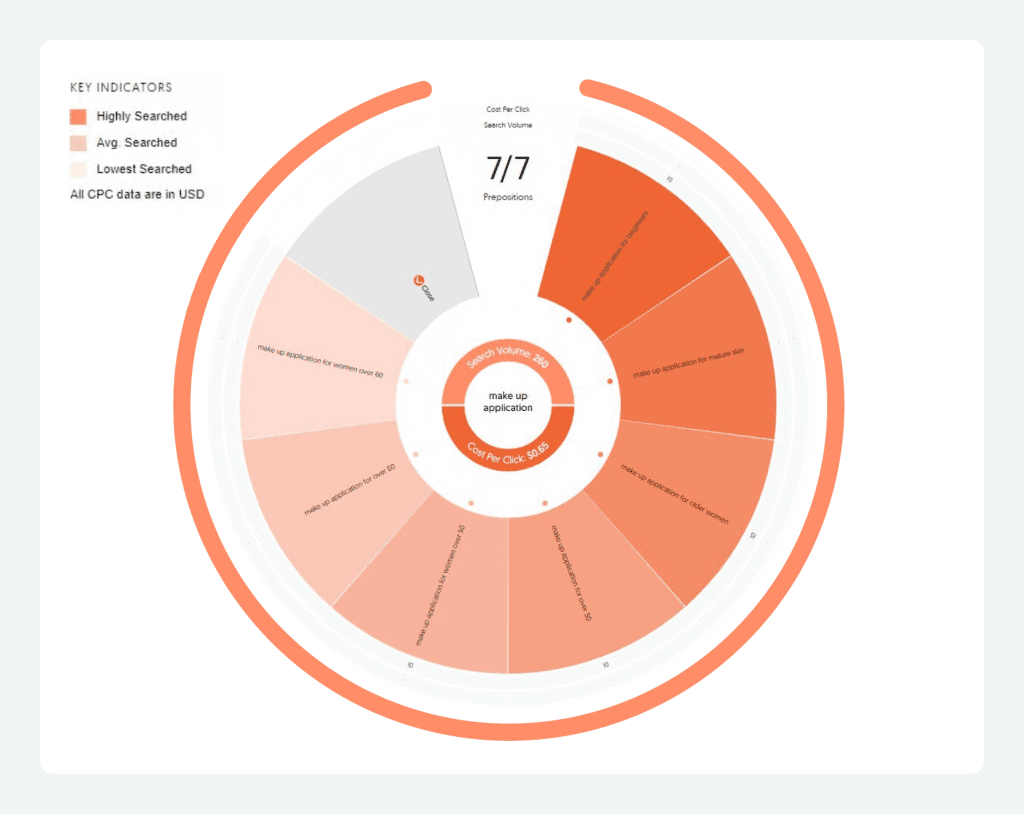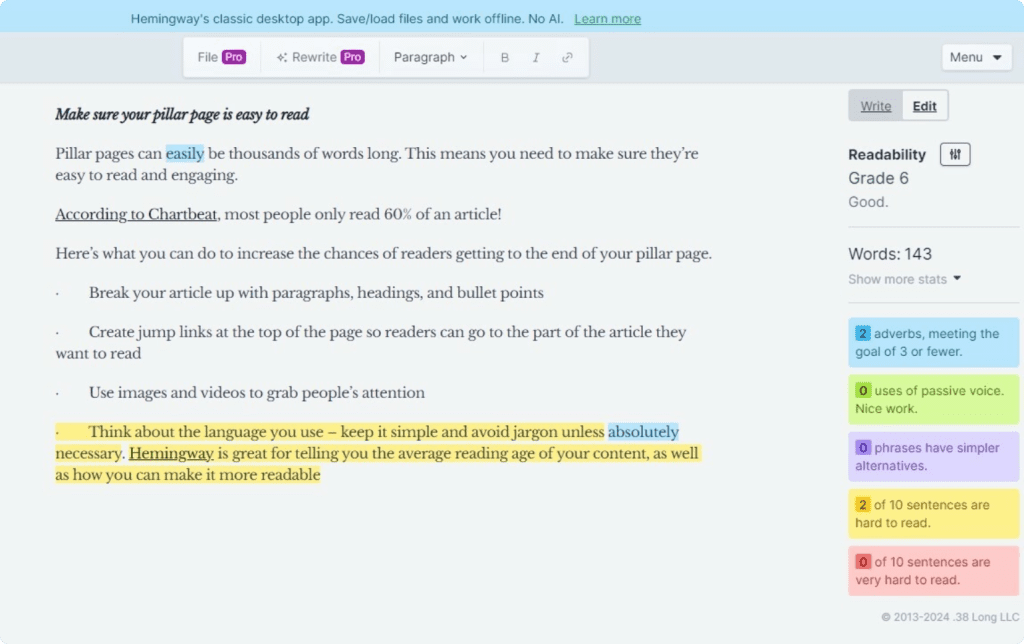Pillar pages and topic clusters: how to organise your blog

Article topics
- What are pillar pages and topic clusters?
- The benefits of using pillar pages and topic clusters
- Our top tips for creating fantastic pillar pages?
A blog is a fantastic addition to your website. You can use it to target specific keywords in the search engines, show off your expertise, and encourage potential customers to buy from your business.
However, how do you structure your blog to get the best results?
A great strategy is to build your blog around pillar pages and topic clusters. In this comprehensive article, we’ll explain what pillar pages and topic clusters are, their benefits, and how to get the best results.
What are pillar pages and topic clusters?
A pillar page is a long article that covers a broad topic.
This pillar page links to multiple shorter articles that go into more detail about topics discussed on the pillar page. These are called topic clusters.

This content creation strategy is sometimes referred to as ‘hub and spoke’ – the pillar page is the hub, and the topic clusters linking from it are the spokes.
Here’s an example of how you might use pillar pages and topic clusters on your website. Let’s imagine you have an eCommerce store that sells makeup.
An example of a pillar page could be an article about how to apply makeup. This would be a long article, ideally 2,000 to 4,000 words long.
In this article, alongside the introduction and conclusion, you could cover:
- Which brushes and makeup tools to own
- How to prep your skin before applying makeup
- How to apply foundation
- How to apply eye makeup
- How to apply blusher
- How to apply lipstick
- Hints and tips for long-lasting makeup
- How to take your makeup off at the end of the day
While you’d go into detail in each section of your pillar page, you’d also link to topic clusters containing more information. For example, in the section about brushes and makeup tools, you could link to articles including:
- Is it better to use a makeup sponge or use your fingers?
- How to clean your makeup brushes
- The best makeup brushes to buy
- Are natural or synthetic brushes best?
You can link back to the main pillar page from these articles, linking the two pieces of content together.
The benefits of using pillar pages and topic clusters
Using pillar pages and topic clusters makes it easier to create content and helps you post regularly. But this way of writing has lots of other benefits too!
- It helps showcase your expertise. In-depth pillar pages show you’re an expert in a particular subject area. This not only allows you to wow prospective customers, but it signals to the search engines that you’re an authoritative source of information
- It helps you get backlinks. Pillar pages provide valuable information and insight, which means other sites are more likely to link to them. This means more backlinks for your website, which can improve your search engine optimisation (SEO) efforts
- It keeps visitors on your website. Adding links to your content means visitors are more likely to stay on your website and keep reading. The longer they stay on your site, the better acquainted they become with your brand, and the higher the chance of them converting
- It helps the search engines understand your website. Linking from pillar pages to topic clusters helps search engines crawl your website and identify the relationships between pages. This means they can crawl and index your content more efficiently
- It gives you an SEO boost. Links pass value to each other – SEO specialists informally refer to this as ‘link juice’. This means that by linking to topic clusters from a high-ranking, relevant pillar page, you can give these topic clusters a little boost in the rankings too!
- It helps you rank for specific keywords. Long-form content like pillar pages give you an excellent opportunity to target a wide range of keywords. This means a higher chance of ranking on the first page of the search engine results
Our top tips for creating fantastic pillar pages
As you can see, pillar pages and topic clusters are great for enhancing your SEO, but not all digital marketers use them effectively. According to Databox, 44% of marketers have fewer than five pillar pages on their websites.
So what can you do to make the most of pillar pages and topic clusters? Here are some of our expert tips.
Plan ahead
You need a plan of action to successfully implement a hub and spoke model of blogging. The best place to start is to identify your pillar pages, then you can determine what topic clusters to create.
Think about the questions that people ask about your products or services. You can look at the emails, social media queries, and live chats you get from customers.
Solid keyword research is essential – this helps you gauge the popularity of specific words and phrases. We recommend a tool called Answer the Public which uses autosuggest data from Google, Bing, and YouTube to identify what people are asking for.

Also look at the pillar posts your competitors write – a great strategy is to write content that provides more value to customers. For example, if your nearest rival has a pillar page that’s 2,000 words, you can create one that is 5,000 words and covers more information.
Once you have created your pillar page, you can develop the topic clusters. Look at your article and consider which areas you want to provide more information about.
How many topic clusters should you have per pillar page? It depends. Broader pillar pages might need ten topic clusters, while more specific ones might only need two or three. Remember that your topic clusters need to be detailed, high-quality, and provide value to readers too.
The easiest way to develop pillar pages and topic clusters is to have a content calendar in place. This is a document that lets you see what articles you need to create, which pillar pages they need to link to, and who is responsible for writing them.
Make sure your pillar page is easy to read
Pillar pages can be thousands of words long. This means you need to make sure they’re easy to read and engaging.
According to Chartbeat, most people only read 60% of an article!
Here’s what you can do to increase the chances of readers getting to the end of your pillar page.
- Break your article up with paragraphs, headings, and bullet points
- Create jump links at the top of the page so readers can go to the part of the article they want to read
- Use images and videos to grab people’s attention
- Think about the language you use – keep it simple and avoid jargon unless absolutely necessary. Hemingway is great for telling you the average reading age of your content, as well as how you can make it easier to understand

If your page visitors make it all the way to the bottom of your article, it’s a sign that they’re highly interested in what you have to say! Make the most of this by adding a call-to-action, for example, a link to another article they may like or a form to sign up for your email newsletter.
Link strategically
There are a few things you need to bear in mind when linking to your topic clusters to ensure your pillar page is user-friendly and optimised for the search engines.
- Space your links out. Having links too close to each other can make them hard to click on, especially on mobile
- Don’t add too many links – this can make your pillar post feel spammy
- Think about your anchor text – this is the clickable text that is part of your link. Make sure it’s relevant to the page you’re linking to, unique, and not overly long – five words maximum
Regularly review your content
The best pillar pages are evergreen – this means they stand the test of time and don’t contain information that dates them too quickly.
However, even evergreen pages need reviewing and amending to keep them fresh and relevant.
Search engines prioritise accurate, trustworthy content – ensuring your content is helpful and always provides value is the best way to do this.
Make a note to review your pillar pages at least once a year. Can you add more information, update out-of-date content, or create additional topic clusters?
Pillar pages and topic clusters might sound daunting, but they’re an easy way to structure your blog, identify articles to write, and create content your web visitors love. If you’re considering writing articles for your website, why not give them a try?
Looking for more insight into digital marketing and how to make your eCommerce store stand out from the crowd? Check out our very own marketing blog!


 Back
Back
